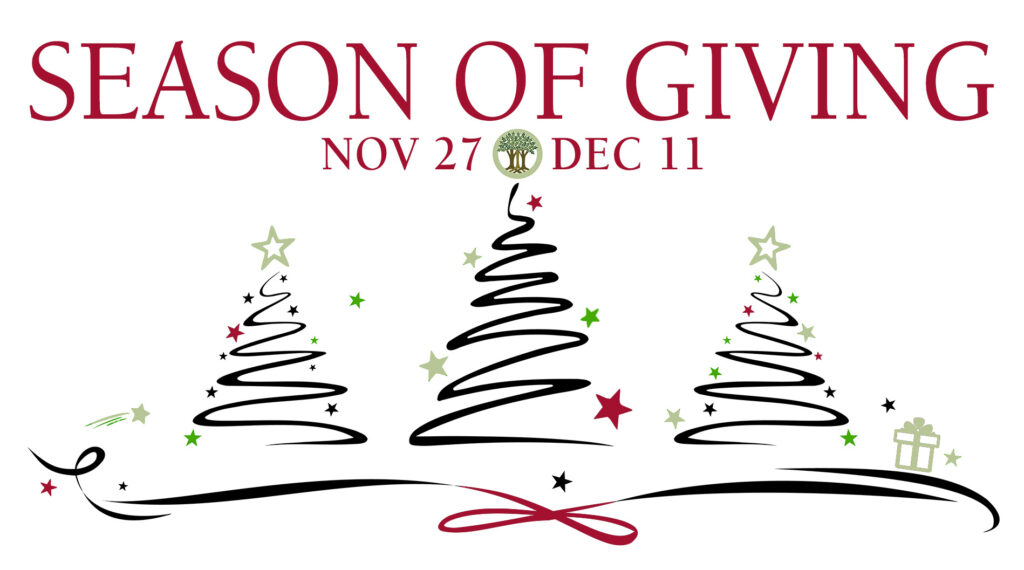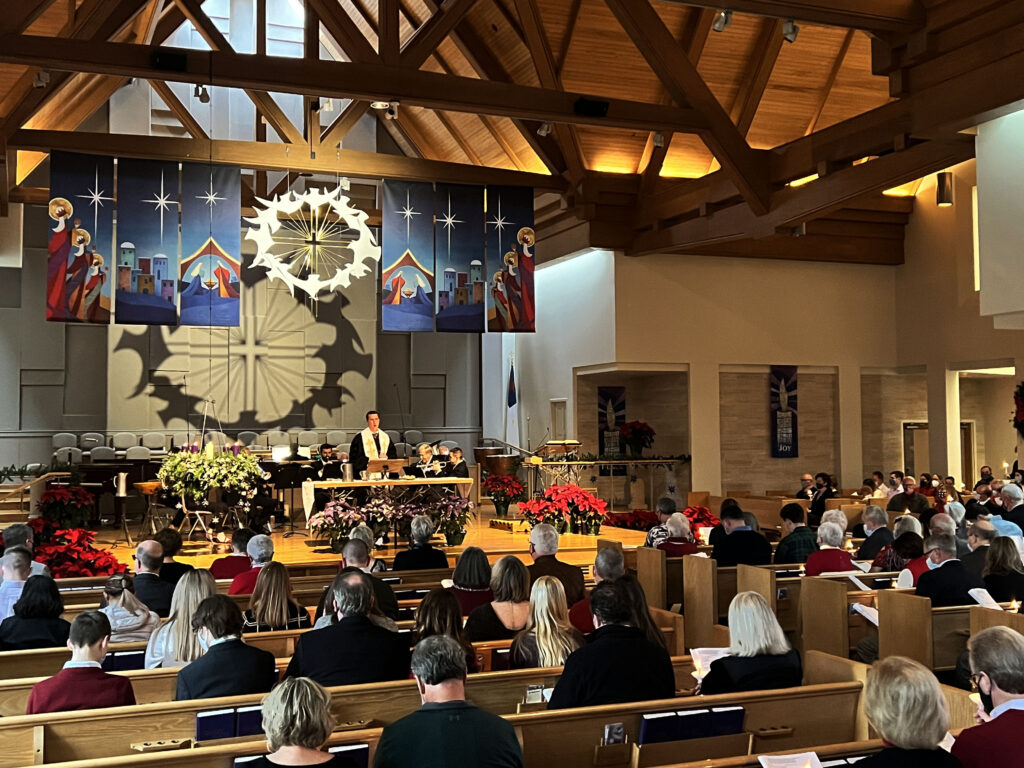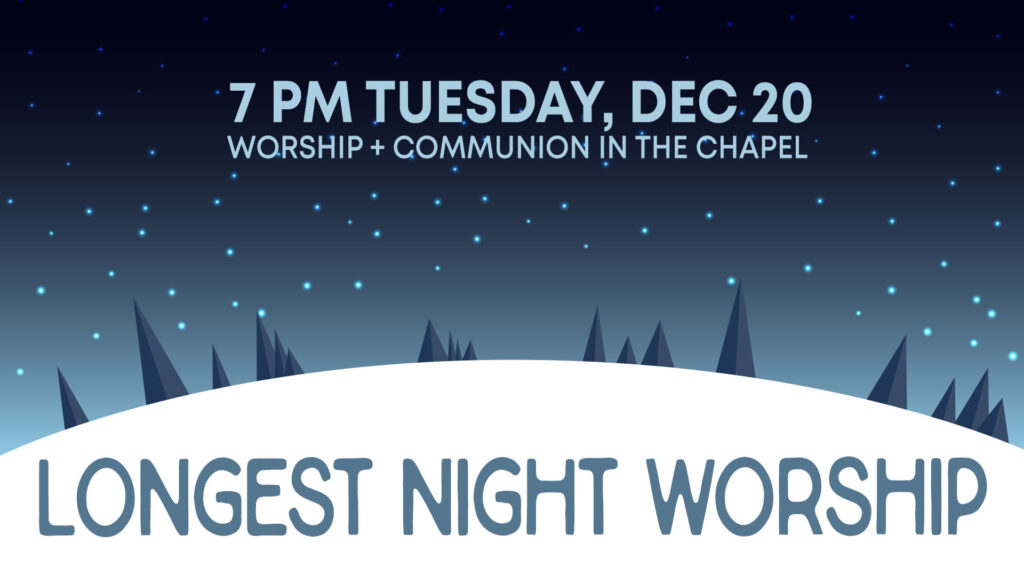News
Santa Shops Volunteers Needed
November 30, 2022DEC 5-14 AT VARIOUS SITES IN HARRISBURG
Sign up to help at Paxton Presbyterian Women’s Santa Shops and you’ll be providing an opportunity for inner-city youth to select Christmas gifts for their family members. Derry Church has helped with this project in past years. The time commitment is 2 1/2 – 4 hours per shift, with starting times varying from 8:30 am – 6 pm.
The Santa Shops schedule is posted on the Presbyterian Women’s bulletin board opposite Fellowship Hall entrance #4. Teens are welcome to help. Sign up by emailing Barb Greenwood. Questions? Contact Doris Feil.
Susquehanna Chorale Presents “A Candlelight Christmas”
November 30, 20227:30 PM FRIDAY, DEC 16 AT MESSIAH UNIVERSITY, PARMER HALL
7:30 PM SATURDAY, DEC 17 AT ELIZABETHTOWN COLLEGE, LEFFLER CHAPEL
4 PM SUNDAY, DEC 18 AT MARKET SQUARE PRESBYTERIAN CHURCH, HARRISBURG
Experience the magic of A Candlelight Christmas presented by the nationally acclaimed Susquehanna Chorale, a chamber ensemble comprised of 40 auditioned singers. Members of the Messiah University Brass will be featured in a performance of John Rutter’s inspirational three-movement Gloria. The Chorale will also sing Jim Clements’ Gabriel’s Message and Eric Whitacre’s hauntingly beautiful Lux Aurumque, along with an audience sing-along of Mack Wilberg’s Joy to the World with brass and organ. A pre-concert instrumental recital will be presented by the Messiah University Brass 15 minutes prior to each performance. A reception for the audience and singers follows each program.
Participating from Derry Church are singers Janice Click Holl and Greg Harris, and pianist/organist Dan Dorty. Click for tickets.
2022 Season of Giving
November 22, 2022
From Nov 27 – the first Sunday in Advent – through Sunday, Dec 11, Derry Church will be giving AND receiving! In the upstairs hallway, you can pick up our 2022 Advent devotional and support these Derry Church mission partners at designated stations in the narthex:
- $25 Walmart gift cards for workers at the Grantville Racetrack Ministry, or write a check to Derry Church notated RTM. Goal = 40 gift cards.
- $25 Walmart gift cards for Derry Township Social Ministry families (Hershey Food Bank clients) to choose what they need most… or write a check to Derry Church notated DTSM. Goal = 60 gift cards.
- A group of local musicians and visual artists have combined to produce a downloadable Christmas album of 33 songs, Joy to the Burg 2022, and a collection of eight holiday greeting cards. For a $20 donation, you can have the album, and for a $15 donation, you can have the greeting cards. Cash, or checks made out to “CCU,” are welcome. All proceeds go to Christian Churches United, which is the recipient of our 2022 Christmas Eve offering.
- Bethesda Mission is sponsoring a food drive to supply Christmas dinners for their clients. Derry’s goal = 25 cans of sweet potatoes/yams (40 ounces) and 25 boxes of brownie mix for their dinner fixings.
- Medical supplies for Christ Lutheran Church’s Medical Mission.
- Pick up an Advent devotional booklet written by Derry members and staff, or click here to download a copy (PDF).
- Drop off your coins for the Change 4 Children offering to benefit the Alliance for Children Everywhere in Zambia.
Nov 2022 Session Highlights
November 22, 2022- Met with incoming officers to hear their faith statements. Ordination/installation of newly elected church officers will occur on Sunday, January 8, 2023.
- Approved a Capital Procurement Requisition submitted by the Communication & Technology Committee to upgrade our security firewall, wifi access points, and install zoom room capability in room 7. Funding for the security upgrades will be through the Capital Facilities Fund and the Zoom room will be through the Futures Fund.
- The Treasurer reported that 2022 contributions continue to be ahead of last year. The 2023 budget was reviewed along with an update on the status of pledge submissions. Over the next month, the budget will be finalized and submitted to the Session in December for approval.
- Approved a request from Derry Discovery Days to continue the sale of Fox Meadows Creamery gift cards as a fundraiser for new playground equipment.
- Reviewed the 2023 Terms of Call for Pastor Stephen and recommended forwarding them to the congregation for approval at the upcoming December 11 Congregational Meeting.
- Received the “Agreed-Upon Procedures” report from Boyer & Ritter, church accountants, for the review of Derry’s 2021 financial procedures. The report indicated that no exceptions were found.
- The Mission & Peace committee will be selling the 2022 Christmas album “Joy to the Burg” for $20, and a collection of eight holiday greeting cards for $15. Proceeds to benefit Christian Churches United, the recipient of the Christmas Eve special offering.
- Approved the Friends of PEB sale of Shares for Scholarships and the 2023 March Mission Madness event to support the schools in Sargodha, Pakistan.
- Received the following new members: Dottie & Art Bossler, Pennie Cavanaugh, Betsy Jamison, Kurestin Miller and Toni Onushco.
Christmas Eve 2022
November 22, 2022Celebrate the birth of our savior at three distinctive Christmas Eve candlelight worship services on Saturday, Dec 24 in the Sanctuary:
2:30 pm: Worship includes Lessons and Carols and communion, with holiday music presented by the Derry Brass.
5:00 pm: A candlelight service of Lessons and Carols featuring participation by children and music for the entire family to enjoy.
7:30 pm: A traditional Christmas Eve candlelight service of Lessons and Carols, with music provided by the Derry Ringers handbell choir and the Sanctuary Choir.
All Christmas Eve services include singing “Silent Night” and sharing candlelight, symbolizing that the Light of the World has come.
Child care will be available at the 5 pm and 7:30 pm services. The lounge adjacent to the Sanctuary offers a candle-free worship zone and a space where young families can move about freely.
Christmas Eve services at 5 pm and 7:30 pm will be live streamed.
On Sunday, Dec 25, worship will be held at 10:30 am in the Sanctuary and live streamed. Enjoy breakfast cooked by Charlie Koch and friends from 9-10:30 am in Fellowship Hall: your donation benefits mission trips in 2023.

Have Dinner with the Derry Day Trippers!
November 22, 20226 PM FRIDAY, DEC 16 AT THE HOME OF CATHY & ALAN OLSON
The next activity for the Derry Day Trippers is a potluck dinner and fellowship. RSVP to Sue Whitaker by Dec 11 if you will be joining and if you would like to carpool. Bring your favorite dish to share. We hope to see you there!
Jumbles Shop Update
November 22, 2022Presbyterian Women’s Jumbles Shop returns this year at the Cookie Walk on Saturday morning, Dec 3. Due to limited space, donated items are restricted to jewelry, nice Christmas decorations, collectibles, and items suitable for gifts, all in good condition. NO furniture, books, CD’s, tapes, or clothing. NO JUNK! It will be tossed.
Items can dropped off in Room 1 through Wednesday, Nov 30. Anyone out of town at that time who wishes to donate, please contact please contact Linda Chidester. Volunteers are needed for Friday, Dec 2 to set up and for Saturday, Dec 3 for sales and cleanup. To volunteer, contact Sally McKinney or Linda Chidester.
Wear Orange on Nov 25
November 22, 2022Rape as a weapon of war is as old as war itself. The objective is to humiliate and degrade, to break the spirit of defenders, to shatter families and communities, to instill a sense of hopelessness and despair. It often leaves wreckage too profound to repair. Women who have been raped do not want to spread information about themselves. Counselors in Ukraine are facing this roadblock and need to provide a place victims can feel safe to talk. Friday, Nov 25 is Orange Day, when Presbyterian Women asks you to join them in wearing orange or an orange ribbon to show awareness of and support those working to end exploitation of females worldwide. Pray for the victims of rape in war areas.
Final Week to Support the PW Thank Offering
November 22, 2022The Thank Offering of Presbyterian Women began in 1888 and supports mission projects at home and abroad. In keeping with the by-laws, 40% of funded projects are related to health ministries. Of the 10 projects funded this year, seven are in the US. Two projects that help adults with disabilities both here in the US and elsewhere in the world.
In Mombin Crochu, Haiti, Village Partners International have a project addressing chronic and recurrent malnutrition. As earthquake, drought, political instability and Covid-19 threatens local food supplies in Haiti, this project will help prevent deaths and address root causes of severe malnutrition for rural, exceptionally poor families in Mombin Crochu. The grant will address several areas: increase interactions between children with severe malnutrition and clinical providers; educate physicians and nurses to support critically ill children; purchase equipment needed for severely malnourished children and create a emergency stockpile of supplies; provide educational events with communities and families; and establish nurseries of Moringa oleifera and Liane panier, plants used as nutritional supplements for families to cultivate in home gardens for personal consumption and income generation.
A second project in McAllen Texas will receive a commercial kitchen upgrade. CAMP (Can Achieve their Maximum Potential) University provides opportunities for adults with special needs to develop skills and interests that facilitate greater independence. The grant will provide a safe, updated commercial gas range that will be used for teaching adults how to follow instructions, such as recipes, and how to use various kitchen appliances. By providing cooking lessons, clients will learn to safely participate in meal preparation and eventually cook their own lunches at the university as an alternative to bringing lunches from home.
Please consider a contribution to the 2023 Thank Offering. Place checks in the offering boxes or mail to the church office, or give online as you are able in thanks for all the blessings in your life.
November 2022 Financial Snapshot
November 16, 2022Cash Flow – Operating Fund as of 10/31/22
| ACTUAL | BUDGETED | |
| Income YTD: | $1,108,075 | $1,041,667 |
| Expenses YTD: | 936,808 | 1,078,283 |
| Surplus/(Deficit) YTD: | 171,267 | (36,616) |
Notes from the treasurer:
- Contributions are about $58K ahead of 2021 and $42K ahead of estimated contributions through October.
- Mission and Peace is $21K behind 2021. Building & Grounds is about $30K below 2021. We do expect these committees to spend their 2022 budget.
Longest Night Worship
November 16, 20226:15 PM TUESDAY, DEC 20 IN THE CHAPEL
For those who have empty places in their hearts and homes this Christmas season, Derry Church offers a “Longest Night” worship service. This reflective, come-as-you-are service with communion returns this year to the intimate setting of our historic Chapel.
For those who are facing the sadness of divorce or broken relationships or grief over the loss of a loved one, this special service gives people an opportunity to remember and to acknowledge sadness and grief, and to know that they are not alone. The Longest Night service can also offer solace to those anxious about employment or financial instability, or facing a frightening diagnosis.
Pastor Stephen leads this service on one of the longest, darkest nights of the year as an opportunity to intentionally acknowledge pain and offer comfort. Come as you are!

Dave Kelley Reports on Conditions in Florida Presbytery
November 16, 2022We were anxious to get down here to North Fort Myers and survey the damage that our property received. We were very lucky in that we lost a tree and some screening, we feel very blessed. This morning we attended our church down here, Burnt Store Presbyterian Church, and learned of the impact Hurricane Ian had on churches in the Peace River Presbytery.
The Chapel by the Sea on Fort Myers Beach had only the steel girders left standing and the concrete floor had a large hole in it from the force of the water. Other congregations lost their sanctuary and are holding services outside. BSPC had their sanctuary severely damaged by water to the point we may not be worshipping in there for many months. We held services in an all purpose room which had tarps taped to the ceiling to prevent further damage. A new roof, drywall, mechanical devices etc. will all need to be replaced.
BSPC will be welcoming their new pastor and his family from South Africa next Sunday. All are excited for his arrival. Buildings aside, many congregation members throughout the Presbytery were devastated by Ian and have lost most everything.
In addition to your prayers, the Presbytery will need financial assistance to help parishioners and churches. I encourage Derry members and others in Carlisle Presbytery to give to Presbyterian Disaster Relief or send contributions directly to the Peace River Presbytery at 2230 Harriet Street, Port Charlotte, FL 33952.